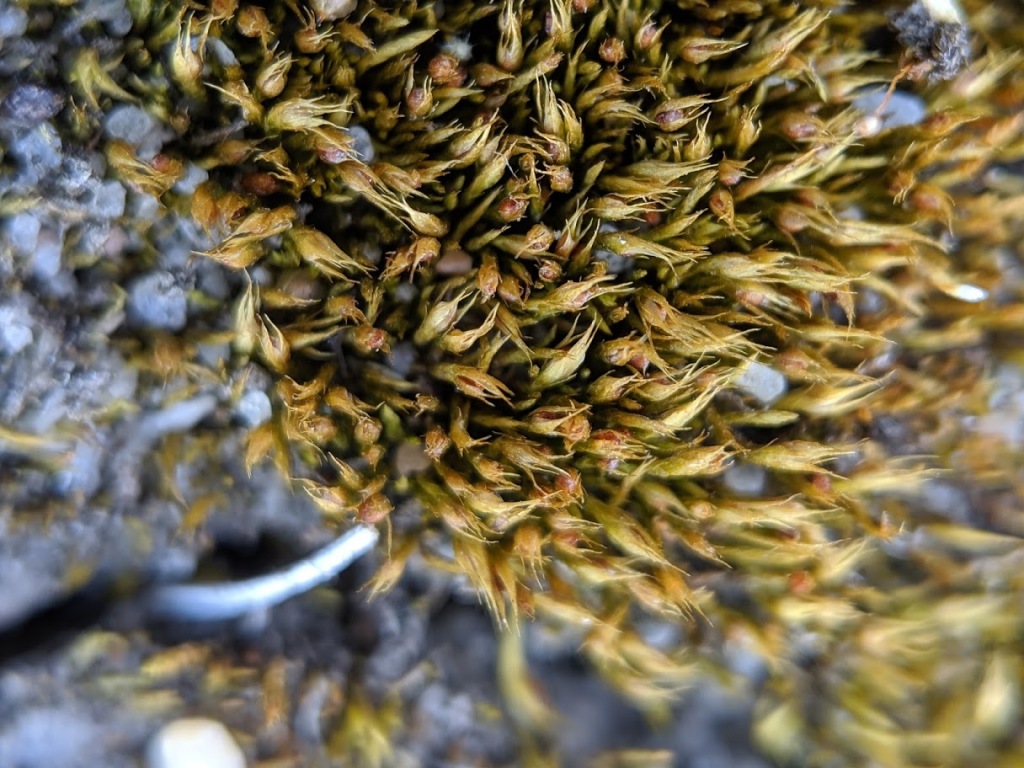Pleuridium
Autoicous or paroicous. Asexual reproduction by innovations and rhizoidal tubers. Gregarious or tufted ephemerals or annuals on soil. Stem simple or sometimes with innovations, with rhizoids near base; central strand present. Leaves becoming longer toward stem apex, oblong, lanceolate or linear, arranged around stem and facing all directions, erect-spreading or appressed when moist or dry; apex acuminate or subulate; costa subpercurrent to excurrent; margin entire to serrate, plane, without a border, uni- or bistratose; laminal cells irregular, oblong, short-rectangular, rhomboid or trapezoid, becoming longer near apex and at margins and quadrate to rectangular at base, smooth; alar cells not differentiated. Capsule cleistocarpous, immersed and erect or pendent and laterally emergent, straight, ovoid, ellipsoid or globose, without stomata or stomata restricted to base, with a rostrum at apex. Calyptra cucullate, smooth, glabrous. Peristome absent.
Twenty-one species and occurring on all continents except Antarctica (Yip 2000); four species in Victora.
 Spinning
SpinningYip, K.L. (2000). A revision of the genus Pleuridium (Musci) . PhD Thesis, University of Cincinnati.


